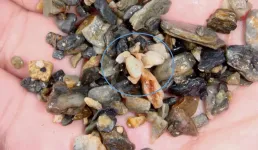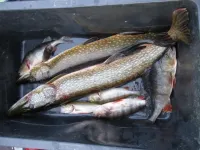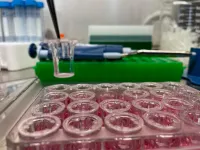New crab species with asymmetrical reproductive units described by Singapore-Japan team
First crab species found to have asymmetrical male and female reproductive structures
2021-06-22
(Press-News.org) A team of researchers from the National University of Singapore (NUS) and the University of the Ryukyus has recently identified and described a bizarre new genus and species of xanthid crab found in Okinawa Island, Ryukyu Islands, Japan. Named Mabui calculus, it is unique among the 7,800 species of known crabs in having strongly asymmetrical male and female reproductive structures!
"Male crabs have a pair of reproductive parts called gonopods while females have a pair of vulvae. All crabs mate in the 'missionary position', so the gonopods pump sperm into females for internal fertilisation of the eggs. This was the accepted orthodoxy until our discovery - a small Japanese crab has evolved to do this very differently!" explained Professor Peter Ng, a world-leading expert in crustaceans and Head of the Lee Kong Chian Natural History Museum at NUS.
The researchers first saw this nondescript little xanthoid crab - which was about 6 millimetres wide - more than a decade ago in the high-energy surf zones in Okinawa in Japan.
"When we took a closer look at these crabs, we found the males and females crabs have markedly asymmetrical male gonopods and female vulvae - one member of each pair was normal while the other was strongly reduced. And they form matching pairs! The right male gonopod is long and well developed, while the left one is much smaller. The left female vulva is large and round, while the right one is lost in most of females. This is the only way the crabs can mate effectively. The evolution of asymmetrical reproductive parts is not known for any crab, and this is truly amazing in nature," Prof Ng added.
The research team collected over 50 specimens, including females with eggs, to conduct further studies. It took the scientists a decade of studies and comparisons to decipher what this 'sexy crab' - the scientists' moniker for the animal - is, and to give it a formal scientific name - Mabui calculus.
"In the Okinawan dialect, 'Mabui' means soul, and local folklore has it that when people are deeply shocked, they 'drop their Mabui'. This exactly describes our feelings when we first discovered this fascinating little crab. It took a lot of work before we realised that this animal is not an anomaly, mutation or freak of nature. It was real, and natural," said Associate Professor Tohru Naruse from the Tropical Biosphere Research Center, Iriomote Station, University of the Ryukyus.
"Just when we thought we know crabs well, we find one that blows our 'Mabui' away," quipped Prof Ng.
The research team published their findings in the Journal of Crustacean Biology on 11 June 2021 (DOI: https://doi.org/10.1093/jcbiol/ruab022).
More about xanthid crabs
The largest xanthid grows to 18 cm across the carapace or shell while Mabui tips in as among the smallest.
Xanthids are among the most species-rich families of crabs and are found all over the world, but are most diverse in the tropics. They occur from intertidal habitats to the deep sea at about 1,200 metres deep, and are one of the most successful groups of crabs on the planet with a wide range of adaptations.
INFORMATION:
[Attachments] See images for this press release:

ELSE PRESS RELEASES FROM THIS DATE:
2021-06-22
Recent studies show that, in the future, the mercury concentration of fish in Finnish Lapland can shift closer to the level found in lakes located below the Arctic Circle. According to researchers, mercury content should be increasingly carefully investigated and monitored in fish and food webs, as the climate and land use change.
Mercury is a heavy metal found in nature. Methylmercury, a particularly toxic form of the metal, accumulates in fish and is biomagnified in food webs. Humans are exposed to methylmercury especially through fish-based diets.
Researchers investigated the joint effects of the climate and land ...
2021-06-22
COLUMBUS, Ohio - Scientists are pursuing a new strategy in the protracted fight against the SARS-CoV-2 virus by engineering nanobodies that can neutralize virus variants in two different ways.
In lab studies, researchers identified two groups of molecules that were effective against virus variants. Using different mechanisms, nanobodies in each group bypassed mutations and disabled the virus's ability to bind to the receptor that lets it enter host cells.
Though vaccination is enabling the resumption of some pre-pandemic activities in parts of the world, ...
2021-06-22
MISSOULA - The map of Montana Kayla Irish pulls up is peppered with red circles, each cluster providing details behind one of today's timely topics - childhood vaccination.
The project, led by Dr. Sophia Newcomer in the University of Montana's Center for Population Health Research, is the first spatial scan analysis to identify hotspots of undervaccinated children across Montana and evaluate whether they are due to social or geographic barriers.
CPHR is funded through the National Institutes of Health, and the analysis is part of a collaborative ...
2021-06-22
Irvine, Calif., June 21, 2021 -- Cancer immunotherapy involving drugs that inhibit CTLA-4 also activates an unwanted response that may self-limit its efficacy in fighting tumors, according to a new study led by Francesco Marangoni, Ph.D., assistant professor of physiology & biophysics and member of the Institute for Immunology at the University of California, Irvine. Study results are published online in the journal Cell.
Using a person's own immune system - immunotherapy - to treat cancer may also stimulate T regulatory cells, which are essential for preventing autoimmunity, in which the body attacks healthy cells and tissue, but limit tumor control. Some anticancer drugs of the checkpoint inhibitor family block the molecule CTLA-4 and activate ...
2021-06-22
Every year in Canada, six trillion litres of municipal wastewater are partially treated and released into the environment, while another 150 billion litres of untreated sewage are discharged straight into pristine surface waters.
Now researchers have found a way to stem that flow: by filtering the waste through the roots of willow trees. Experimenting with a plantation in Quebec, the scientists estimate that over 30 million litres of primary wastewater per hectare can be treated using 'bio-refinery' annually.
Their results were published June 14 in the journal ...
2021-06-22
[Brooklyn, New York] - [June 21, 2021] - Applied Biological Laboratories (Applied Bio), a biopharmaceutical company focused on the respiratory disease market, announced that its study published online in Immunology, Inflammation and Disease was able to determine the mechanism behind respiratory inflammation and treat it effectively with Biovanta(TM), a 100% naturally derived, over-the-counter (OTC) drug for cold, cough and sore throat.
The study results also showed that almost all of the leading OTC products on the market can damage the upper respiratory cells and may prolong illness. This research study and its findings represent one of the first major breakthroughs in decades for the cold and flu market.
The study, titled ...
2021-06-22
UNIVERSITY PARK, Pa. -- Clickbait headlines might not be as enticing to readers as once thought, according to a team of researchers. They added that artificial intelligence -- AI -- may also come up short when it comes to correctly determining whether a headline is clickbait.
In a series of studies, the researchers found that clickbait -- headlines that often rely on linguistic gimmicks to tempt readers to read further -- often did not perform any better and, in some cases, performed worse than traditional headlines.
Because fake news is a concern on social media, researchers have explored using AI to systematically identify and block clickbait. However, the studies also suggest ...
2021-06-22
Amazon rain forests could be at far higher risk of extreme drought than previously thought, according to new research.
An international study, led by the University of Leeds, warns that huge areas in the eastern part of the Amazon face severe drying by the end of the century if action is not taken to curb carbon emissions.
As a result, large amounts of carbon dioxide would be released from the forest into the atmosphere,
adding to the greenhouse gas effect and driving further climate change.
The increased dryness during the Amazon dry season would further threaten the viability of large parts of the rainforest, as trees are already water stressed and there is greater risk of forest fires.
The predicted droughts could also have far-reaching consequences ...
2021-06-22
Vanadium oxo (VO) species were often used to oxidise sulfide/amine compounds and alkenes when combined with peroxide oxidants. VO species are well known as important vitamin supplements for potential diabetic prevention. They are highly prevalent as metalloenzyme like haloperoxidase. The current catalyst class comprises VO species, substituted-salicylaldehyde, and alpha-amino acids that are nontoxic and highly enriched in ascidian sea animals and plants. Professor Chien-Tien Chen of NTHU pioneered aerobic asymmetric couplings of 2-naphthol with VO species to form optically active binaphols in 2001 (reported in C&EN News, 79(20), 45-57(2001)), which was believed to proceed in a VO-bound, single/dual-mode activation or free radical-radical/free ...
2021-06-22
What causes an eruption? Why do some volcanoes erupt regularly, while others remain dormant for thousands of years? A team of geologists and geophysicists, led by the University of Geneva (UNIGE), Switzerland, has reviewed the literature on the internal and external mechanisms that lead to a volcanic eruption. Analyzing the thermo-mechanics of deep volcanic processes and magma propagation to the surface, together with magma chemistry, the geologists determined that most of the magma rising from depth actually does not cause a volcanic eruption. They also show that older volcanoes tend to produce less frequent, but larger and more dangerous eruptions. Their findings, published in Nature Reviews ...
LAST 30 PRESS RELEASES:
[Press-News.org] New crab species with asymmetrical reproductive units described by Singapore-Japan team
First crab species found to have asymmetrical male and female reproductive structures






